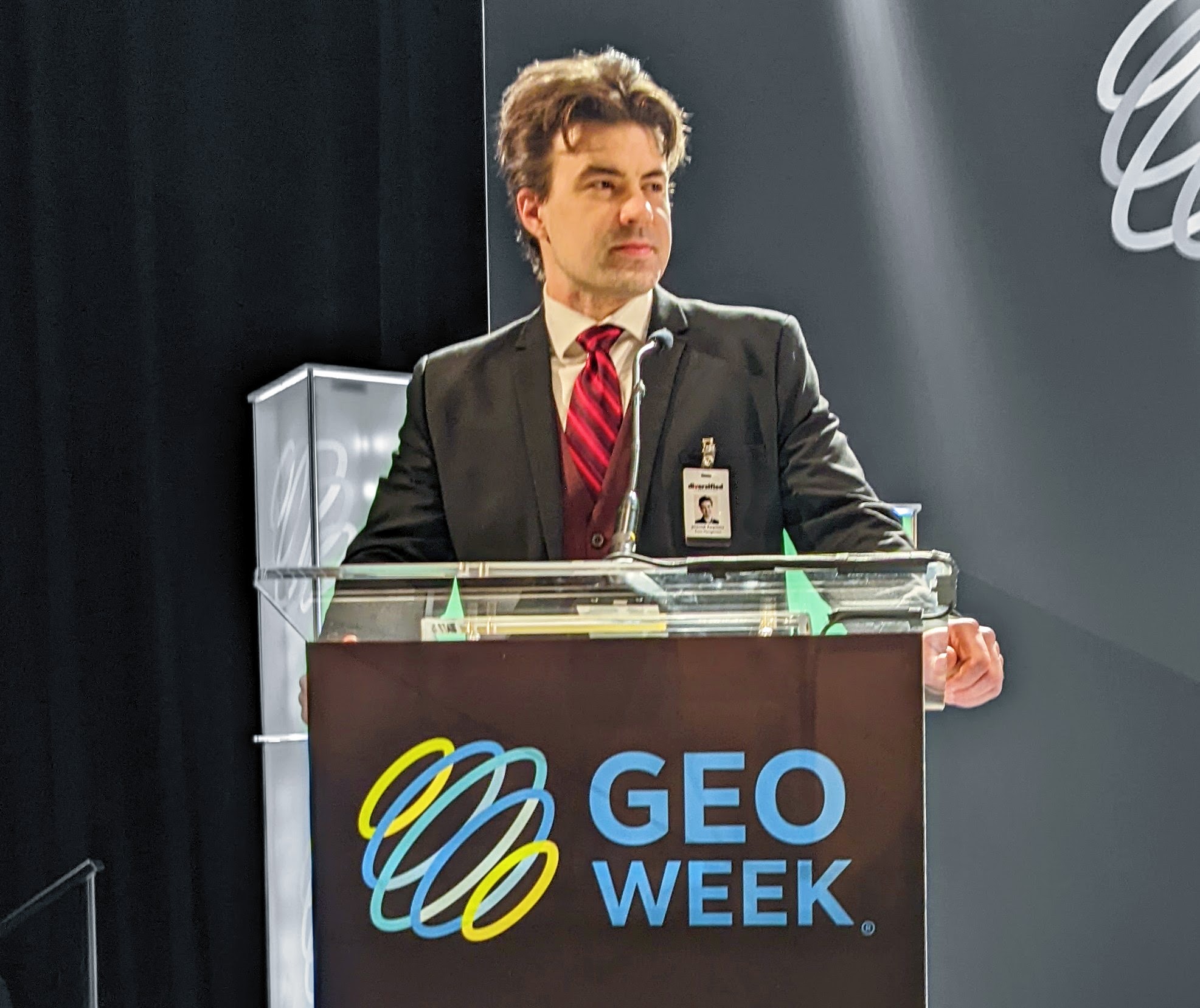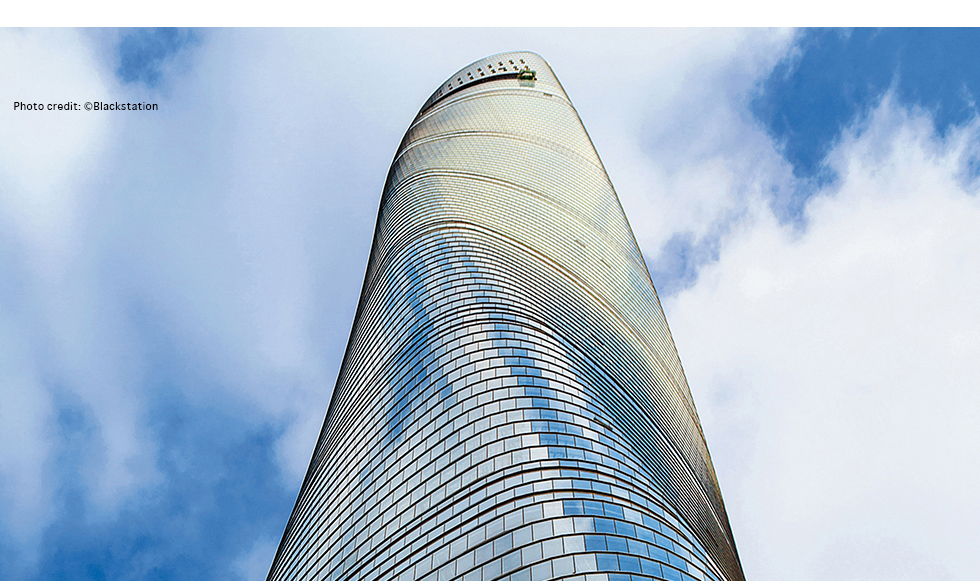Exploring how creative innovation can be balanced with the technical needs of a given project is a fascinating topic. There’s no such thing as an architect who thinks exclusively about the inherent creativity or constructability of a given project, and one only needs to look at the work of a firm like Gensler to get a better understanding of how this balance plays out on a grand scale.
These creative and practical elements of a project can be explored and realized in an incredibly powerful way thanks to technology innovations that have been rolled out in the last decade, but they’ve also enabled something even more powerful. Now that innovative design can be fully explored with these tools, building forms and the human experience associated with them are being taken to a whole new level.

Ken Sanders
In order to get a better understand around what such things mean in a practical sense, I was able to connect with Ken Sanders, FAIA, who is principal and managing director at Gensler. His work to oversee Gensler’s Design + Delivery programs along with his interest in the intersection of digital technology and design innovation have given him key insights around these topics and much more.
Jeremiah Karpowicz: I want to focus on how technology developments have impacted technical and creative considerations that AEC professionals, and especially architects, deal with for their projects, but first, I wanted to get your thoughts about the best way to consider these elements. Can you talk a little bit about how you’ve seen the technical needs of a project tie into the creative considerations of that project? Or are such considerations inherently part of a greater whole, and impossible to split out in the way I’m suggesting?
Ken Sanders: When used intelligently, design technology definitely allows the creative opportunities and the technical requirements of a project to complement and reinforce each other, rather than compete with each other. And faster iteration using digital tools certainly allows more creative explorations of design solutions that meet demanding technical criteria, whether energy performance, structural performance, cost or schedule.
But the technical demands of a project are just the table stakes. They are not by themselves a path or strategy to innovative work. It’s really about letting computers do the heavy lifting of analytics and computation while allowing talented people to focus on the more creative and experiential aspects of design. It’s both/and.
Can you give us an example of these elements working together in that kind of “both/and” fashion?
Shanghai Tower is a wonderful example of integrating creative and technological innovation. The rotary-shaped plan and twisting shape of the building are not aesthetic conceits. The building’s unique form not only is culturally symbolic to China, but also resulted in a 24% reduction in structural material. The strongest lateral forces in supertall buildings come from the wind, not earthquakes, so the rounded, tapered form avoids presenting a flat face to any wind direction and produced significant structural savings. Biomimicry at its best!
In addition, designing and fabricating the curtainwall for such a complex form – and reducing unnecessary variation in curtainwall panels – could only be accomplished through the use of computational geometry and design flow software. Putting advanced technology into the hands of our most talented designers continues to produce surprising, amazing results.

Photo credit: ©Blackstation
Have these technology innovations opened up the profession to some that might have otherwise struggled with logistics if they didn’t have software to help them work through everything?
Technology has certainly allowed our project teams to tackle increasingly complex and large-scale design problems with confidence. However, software does not relieve a designer of the responsibilities to think creatively and collaborate well with others. We consistently see the best outcomes in applying design technology from talented and highly collaborative teams. Design technology is a talent enabler and talent magnifier, but it is not a talent substitute.
The proof of that can probably be seen in terms of how this technology has been adopted. When many of these programs were released, some were concerned they’d result in cookie cutter designs, because everyone would be using the same software, and thus, creating the same things. But these innovations have actually further empowered these talented professionals to create new and unique designs, haven’t they?
Of course! I never shared the cookie-cutter concern because I’ve always believed that the long-term effect of design technology would be to expand human creativity, not constrain it. And that has turned out to be true. But certainly it was an early concern in some quarters, in part the result of how CAD and BIM were marketed as productivity tools.
Today, with computational geometry, data analytics, machine learning and sensor technology, the opposite trend is accelerating, unleashing amazing new creativity in highly responsive, bespoke designs – not only in building form but also in planning, program and human experience.
That ties into one of your passions, which is the intersection of digital technology and design innovation. What are some of the ways you’ve seen digital technology drive design innovation?
Innovation frequently emerges from the intersection of different disciplines and by leveraging ideas from one area of expertise to another. Examples include when we borrow design ideas from our retail practice and apply them to office workplaces, or when we integrate hospitality concepts into health and wellness facilities, or when we apply our experiential design and branding expertise to airport projects. Intersections are often the most interesting place to be! In terms of digital technology, it’s also about seeing deeply into the future, looking beyond the gee-whiz infatuation of new technology and understanding where and how it will be used in mainstream, almost ordinary ways down the road.
One of the most exciting frontiers today is the integration of ubiquitous sensor technologies with data analytics and machine learning software. You see this in autonomous vehicles, which are already having a profound impact on the planning of our cities and the potential recovery of so much wasted space allocated to parking. You see this in low-cost sensors embedded into corporate offices, allowing us to better analyze how space is actually being used and how individuals and teams are interacting and collaborating.
Such integrations create dynamic feedback loops that inform creative and highly responsive design solutions, which in turn create richer, more meaningful experiences for people. At Gensler, we continue to expand our investment in these types of technology and design intersections in ways that unlock value for our clients and communities.

Photo credit: ©ConnieZhou
Those kinds of innovations tie back into something Dennis Shelden talked about when he mentioned the performance requirement of a building. What kind of dimensions have these new tools opened up when considering performance requirements?
It’s easier to talk about building performance – energy, water, waste, carbon, etc. – but at the end of the day, it’s really about the human experience and human performance. Performance is not just about the efficiency and optimization of buildings, it’s about the resilience of our communities and the health and happiness of people. Gensler’s Experience Design Index was developed, in fact, to help our design teams and our clients better understand and measure these human experiences and how the built environment can positively influence them.
And when we talk about performance requirements related to reducing energy consumption and water, that takes this performance requirement concept to a whole new level doesn’t it? Because then it’s not just about a single building or project.
Exactly! A property line is rarely the most relevant boundary. Water strategy, for example, really needs to start at the regional level, then community, neighborhood and finally the individual project. With energy, it’s about both demand and supply. Where does the energy come from? What percentage of the local grid is renewable?
Reducing loads and making everything else electric are not, by themselves, the answer. Owners of electric cars are often surprised to learn where and how the electricity is actually produced and the significant environmental impacts of the global lithium battery supply chain. It’s not pretty. Today, nothing is standalone; everything is interconnected.
Speaking of taking a concept to another level, can you talk a little bit about the performance requirements that Gensler itself is focused on and how that ties into the Paris Pledge for Action the company signed?
In terms of sustainable performance, we remain strongly committed to AIA 2030 and the Paris Pledge for Action, both of which move all of us toward a more sustainable, net-zero-energy and carbon-neutral future. Each year, our Gensler design teams do an amazing job of aggregating and estimating the net impact of our work, which last year represented over a billion square feet of projects. We are very proud of our annual investment in self-reporting – in the latest AIA 2030 summary, Gensler alone accounted for 40% of the square footage of all projects reported to the AIA, and over 70% of the interiors projects. So our commitments remain firmly in place. Our 2017 Impact by Design publication, which summarizes Gensler’s aggregate impact over the past year, will be published in late September during Climate Week NY. We walk the talk.
Our ability to meet these goals, of course, also requires engagement and collaboration with engineers who share them with us. So we continue to seek out consulting engineers whose strategies and expertise are strongly aligned with our own. It definitely takes a village!

Photo credit: Gensler






